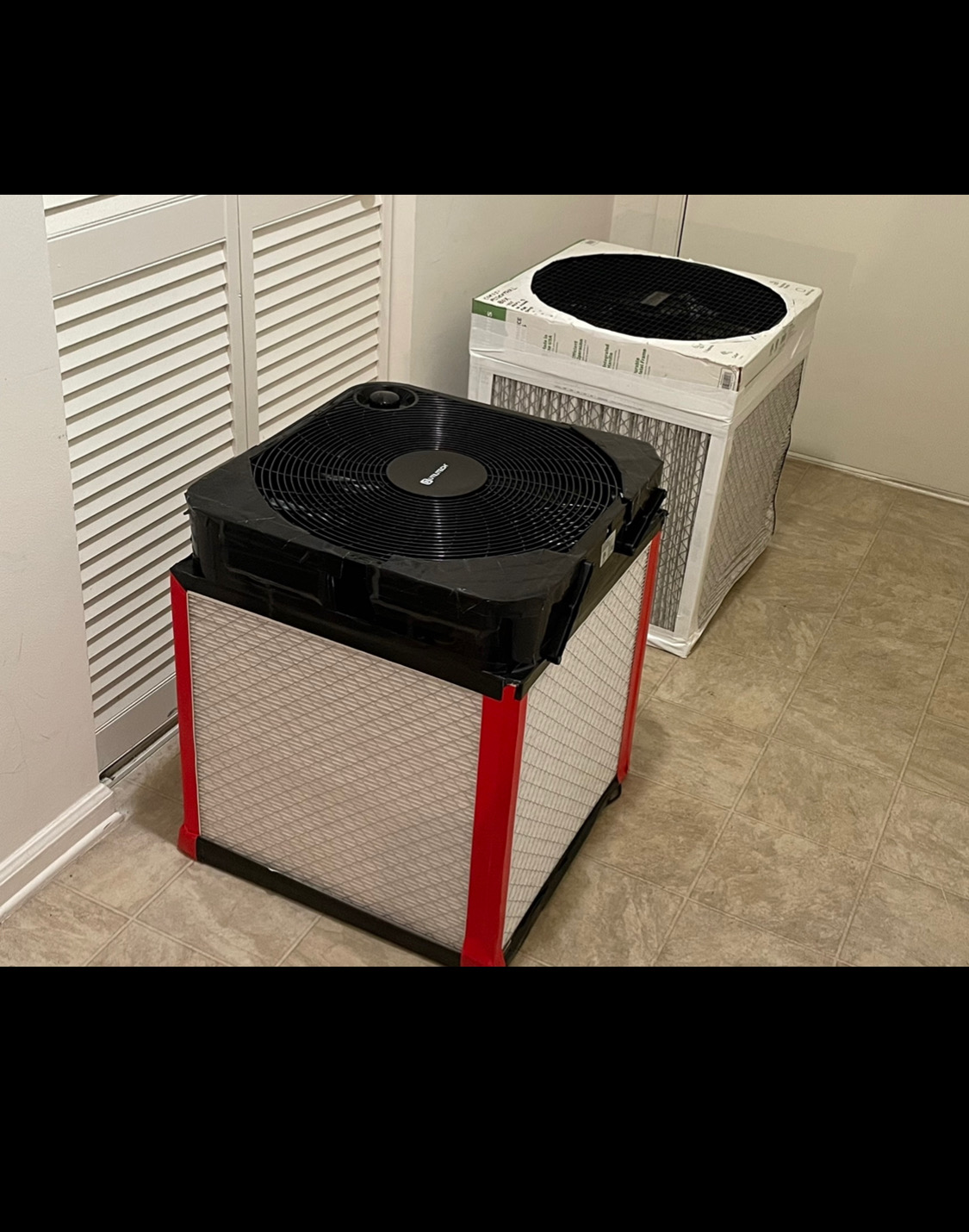Corsi-Rosenthal Boxes (CR Boxes)
Twitter Handles of Experts You May Want to Follow
- Richard Corsi, PhD, PE, Dean of Engineering, University of California, Davis @CorsIAQ https://corsiaq.com/
- Jim Rosenthal, CEO – Tex-Air Filters, @JimRosenthal4
- Kimberly Prather, PhD, Distinguished Professor and Distinguished Chair in Atmospheric Chemistry, Scripps Institution of Oceanography, Department of Chemistry and Biochemistry, UC San Diego, @kprather88
- Mike Hoerger, PhD MSCR MBA, Founding Director of Lousiana’s Health Psych PhD Program, @michael_hoerger
- LA Parents for COVID-Safe Schools, @LAParents1
Good references
Clean Air Stars: https://cleanairstars.com/
Clean Air Crew: https://cleanaircrew.org/
Who makes CR Boxes
CR Boxes started as DIY projects, although there are some companies (Clean Air Kits, https://www.cleanairkits.com/) who sell finished CR boxes as well as kits for STEM groups.
People hear about CR Boxes, find out how to make them through a Google or YouTube search (also below), order the supplies, and then build them.
Some local organizations (STEM clubs, girl scouts, etc.) have built and donated CR Boxes.
Variations of CR Boxes
- Number of filters
- 4 filters, with the bottom made of cardboard (seems to be most popular version)
- 5 filters, with the bottom being an additional filter (version that was characterized)
- Other
- Note: A design with 1 filter and a shroud has been referred to as a Supplementary Air Filtered Exchange (SAFE)
- Size
- 20″ fan with 20″ x 20″ filters (size that was characterized)
- 20″ fan with four (4) 20″ x 16″ filters
- 10″ fan with four (4) 11.25″ x 11.25″ filters (I initially tried four 10″ x 10″ filters, but the cage for the fan blades was too small)
- The “bottom” could be another filter (in which case you need to ensure the electric cord
- Multiple computer fans with two filters
- Other
- Number of Fans
- Some people have made CR Boxes with using multiple small, computer fans, which are generally quieter
Factors to Consider when Choosing Materials for CR Box
- Size of CR Box
- Noise – a loud fan may make it difficult to have conversations or phone calls, which could lead to turning off the fan OR people removing their masks to be heard better AND/OR people talking louder. When people talk louder, they generate more aerosols. Multiple computer fans will produce airflow and be quieter.
- Portability of CR Box – there are rechargeable fans which would allow someone to take a box with them everywhere.
- Most air filters were designed to be hidden away. Some are more forgiving to be brushed against than others.
- Effectiveness of Filters
- This article lists the size of COVID particles as ranging from 50 to 140 nanometers (.05 to .14 microns) https://www.news-medical.net/health/The-Size-of-SARS-CoV-2-Compared-to-Other-Things.aspx
- Must be MERV13 or better
How To Build CR Boxes
There are lots of variations on CR boxes. The keys are:
- Use filters that are MERV-13 or higher (or similar based on another scale; filters have to be small enough to filter out virus particles).
- Make sure the filters are faced the right direction such that air is drawn through the fans.
- Make sure the edges are sealed with duct tape such that all of the air drawn through the air passes through the filter rather than around it.
- If using a square box fan, add a shroud to prevent unfiltered air from being drawn into the fan, lowering its efficiency.
Co-inventor, Richard Corsi, shows how to build a CR box.
Similar Approach:
- Determine desired size (and how you will get the electric cord (or access to rechargable battery) from the fan to the outlet)
- Buy supplies (box fan, filter, duct tape, cardboard). Filters must be MERV 13 or higher to filter out COVID particles.
- Making sure that the arrows are pointing inwards, create 4 walls with the filters. The filters are sturdy enough to support the weight of the base. Tape all the seams.
- Add the base – tape cardboard (or another filter) to the bottom. Tape all the seams.
- If the fan has rounded corners, apply cardboard to the corners so that there is not a gap between the fan and the filters.
- Add the fan to the top and tape all the seams.
- Add a “shroud” to the top of the fan (as needed, depending on the fan) to cover the gaps between the circular path of the fan blades and the casing of the fan. (Tape all the seams). [NOTE: I have built CR Boxes where I keep the fan in the fan box and cut a large circle out of both sides of the fan box), Tape all the seams.
Evidence CR Boxes Work
See discussion in COVID forum and thread below.
Performance characterized: https://www.tandfonline.com/doi/full/10.1080/02786826.2022.2054674?scroll=top&needAccess=true
How often do the filters need to be replaced?
Replace if they become wet. Under most circumstances, the filters will be effective for at least a year.
Points to make when Advocating for CR Boxes
- CR Boxes remove COVID particles (and allergens, etc.) from the air, lowering the risk of transmission
- The long-term effects of Long COVID are unclear, but people who suffer from it may lose money from loss of earning potential AND may have to spend money for treatments.
- Even though CR Boxes don’t replace the need for masks, many people wear masks which don’t fit properly and remove their masks on occasion (talk, drink, eat, etc.)
- CR boxes are an effective, low-cost alternative to HEPA filters
- Be prepared to answer questions regarding noise, filter replacement, and cost of electricity to operate.
